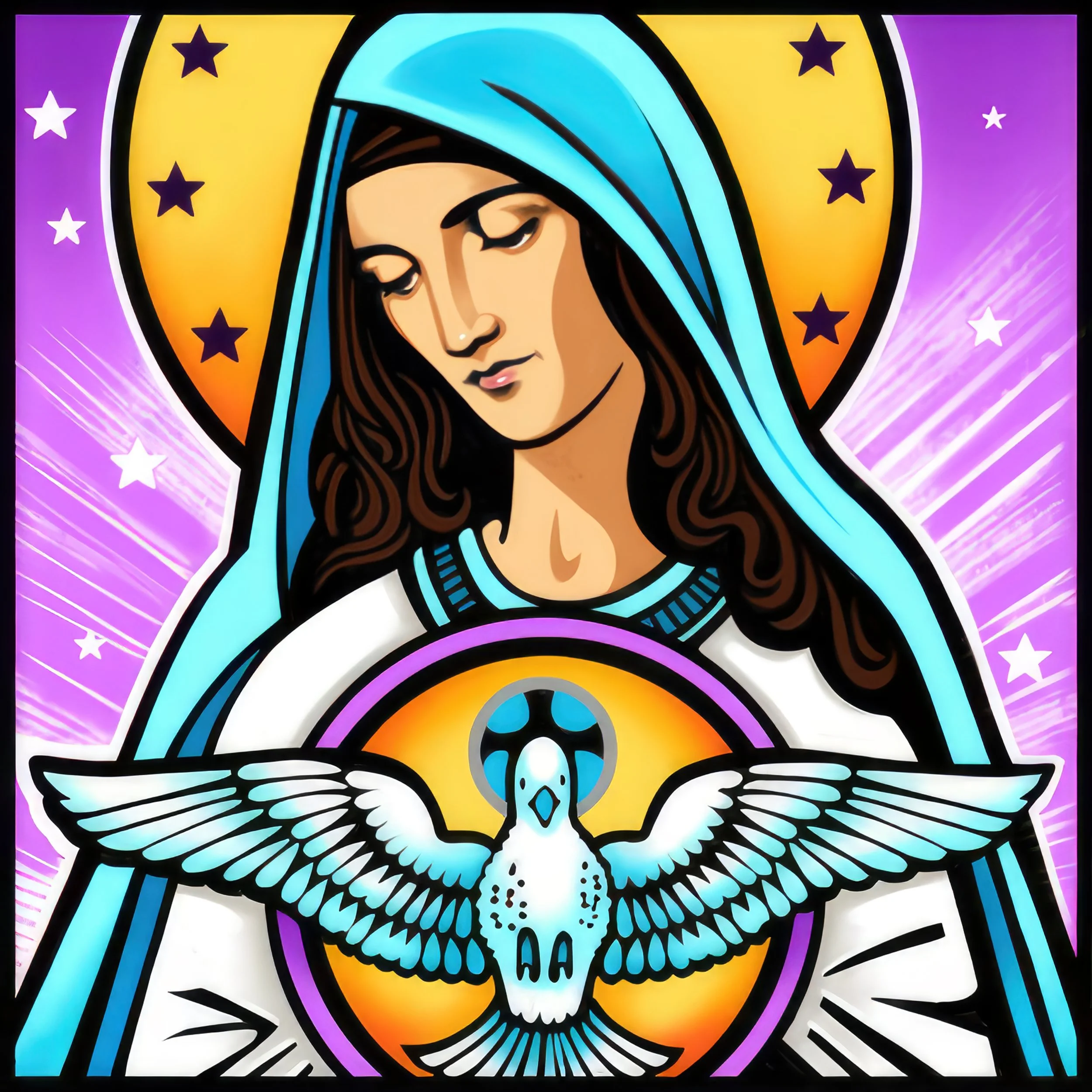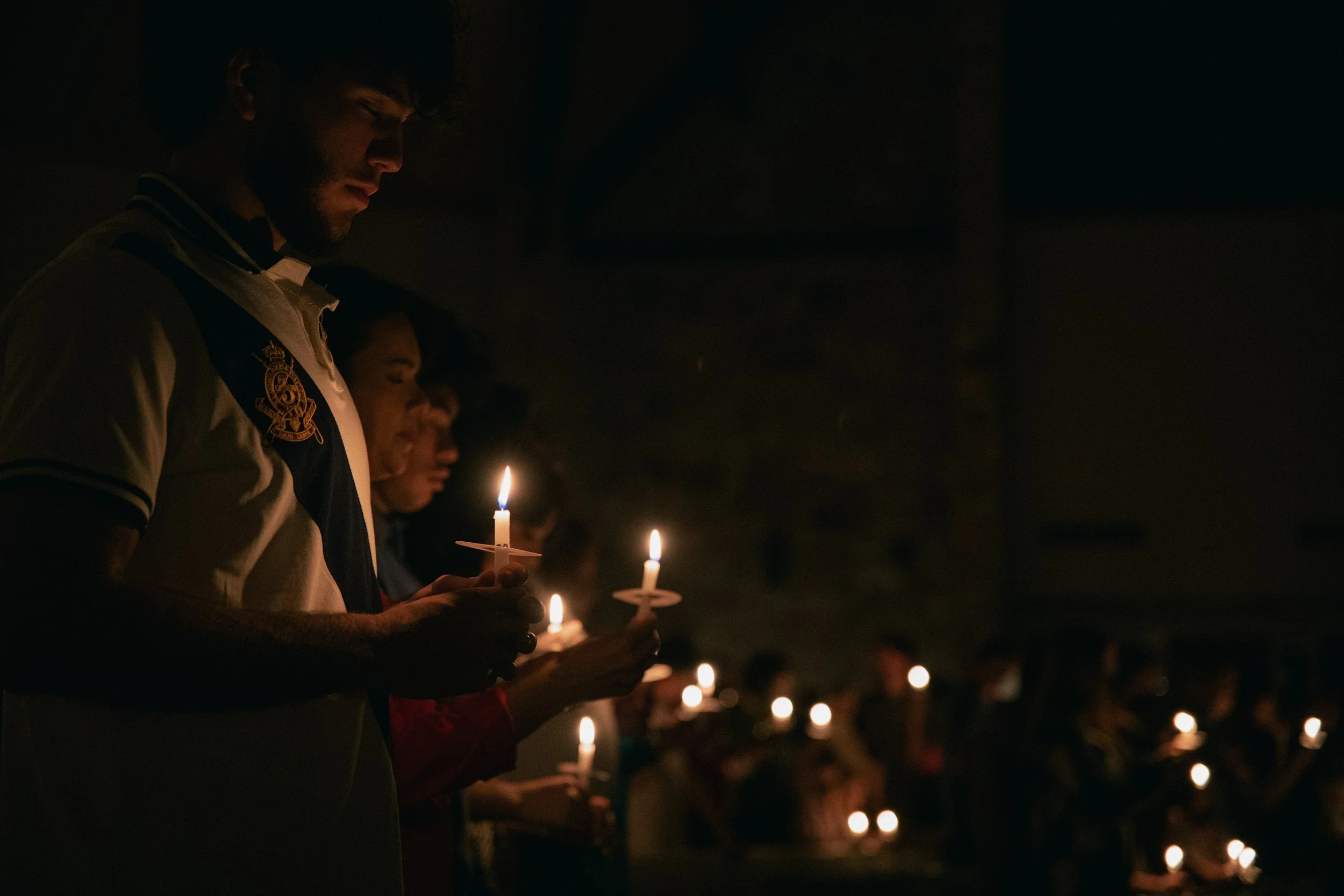Days of Obligation
Periodically throughout the year, the Church celebrates certain days called holy days of obligation. These are seen as occasions of supreme importance where a Christian is obligated to attend Mass. It is in fact a mortal sin to skip Mass on these days without serious reason. Examples of such occasions would be December 8 (Immaculate Conception) and August 15 (the Assumption of Mary). But did you know: every Sunday is actually a holy day of obligation. This means we are obligated to go to Mass every Sunday, not just whatever day is most convenient to us.
Advent Wreath
During the season of Advent, many of us have different ways of preparing for Christmas. Some may decorate gradually, putting out a different piece of the Nativity set each day; others may do the Advent Calendar. Easily the most common devotion of Advent, though, is the Advent wreath. But what actually is the Advent wreath? What does each part represent?
Thanksgiving
Many people are perhaps familiar by now with where the word “Eucharist” comes from and what it means. For those not yet familiar, the word comes from the Greek word “eucharistia,” which translates to “thanksgiving.” The Eucharist is a lot of things for us: our new Passover, the source and summit of the Christian life, the Bread of Angels come down from Heaven. But the Church chose to name it “Eucharist” because it is our means of offering thanks to God for all that He has done for us.
Vigilance
Christianity is a religion of anticipation, of hope. We as Christians are waiting for something more that is to come. What is it that we are waiting for? Contrary to popular belief, what we are waiting for is not just to die and go to heaven. What we are awaiting is our Lord’s return!
Rapture
Every year as we approach the feast of Christ the King, our readings for Mass begin to shift focus from the general life and ministry of Jesus to specifically the “end times.” We will hear prophecies from Old and New Testament about the “Day of the Lord” as well as readings from Revelation and other apocalyptic books. However, we must acknowledge the level of confusion that come from other religions and denominations about these things. One specifically that a lot of Catholics have fallen into believing is called “Rapture Theory.”
Hallowtide
This weekend, the Church celebrates what is called “Hallowtide,” or the feasts of All Saints Day and All Souls Day. The name “Hallowtide” comes from the older English version of the name All Hallows Day. “Hallow” means holy or saintly, which incidentally means that Halloween (All Hallows Eve), despite the secular world’s attempt to assert otherwise, is actually originally a Christian holiday.
St. Isaac Jogues
How far would you be willing to go for the Gospel? For Christ? Often times, when we meet resistance, let alone outright opposition, to the Christian life, we tend to shrink away and hide our faith. I am not referring solely to speaking about the faith, but rather just simply living it. This was not the case for St. Isaac Jogues, whose feast day we celebrated earlier this month.
Marriage
One topic I have found myself discussing a lot recently is marriage. Marriage is one of the seven sacraments, but it is actually the only one to predate (in a sense) the ministry of Jesus. It goes all the way back to the beginning, when in Gen. 2:24 we are told: “That is why a man leaves his father and mother and clings to his wife, and the two of them become one body.” But in John 2, at the Wedding at Cana, Jesus’ changing of water into wine is meant to signify his taking marriage (something already present and good in itself) and changes it into something new and of the highest quality, a sacrament.
Repentance
We know that Jesus’ mission is to call us to repentance and conversion, to save us from
our sin. But what is the means by which we receive that salvation? Is it just through faith, belief?
Or is there something more? The Bible is actually quite clear.
In Matthew 28, Jesus tells the Apostles to go out and make disciples of all nations
through baptism and teaching them His commandments. In John 3, Jesus tells Nicodemus that
whoever is not born of water and Spirit cannot enter the Kingdom of Heaven. This and many
other passages tells us that baptism is the means of being initially brought into that salvation
from sin.
A Simple Invitation
In the first few months of my priesthood, I had virtually the same experience with three different people on three different occasions. The first was when I went to the hospital to visit a patient there who turned out to be a lifelong Protestant and, while I was there, I half-jokingly suggested that if he should want to come into the Church, I could make that happen. The second was, upon hearing about this, another parishioner came to visit me and told me that that was essentially how she had come into the Church herself: through a simple invitation. Later that day, I came across an article on Facebook suggesting that, as modern evangelizers, the goal should be to invite people rather than try to outright persuade them of the truth.
Priesthood Sunday
This weekend is Priesthood Sunday. So let’s ask the question: what is a priest? From a sacramental perspective, a priest is a living sacrament where the man is united to Jesus in a unique way. When the priest acts as priest (celebrating Mass, hearing confessions, etc.), he acts “in persona Christi” or “in the person of Christ.” This means that in the Mass or in the confessional, it is not Fr. So-and-so who is praying or speaking, it is Jesus Himself. Every sacrament serves as a sign pointing to some higher, spiritual reality; the priest is a living sacrament in that he serves as the sign of Jesus’ presence within the Church.
Sacred
Often times, when I am teaching the Mass, I will start by asking the person to define the word sacred. Almost every time, I get the response “holy” or “blessed.” These are not necessarily wrong but they are too broad. A rosary is holy and blessed, but a rosary is not sacred. All sacred items are holy but not all holy items are sacred. Instead, for something to be sacred, it means that that item is reserved specifically for the purpose of worship.
Gifts of the Holy Spirit
During Confirmation prep, many of us probably had to memorize the list of the Gifts of the Holy Spirit. These gifts are what we receive from the Holy Spirit who is poured out in full into our hearts in the sacrament of Confirmation. But how many of us know what each individual gift is, what they do for us? Well, St. Thomas Aquinas gives us the answer:
St. Monica
This past week, the Church celebrated the feast of St. Monica. For those who may not be familiar with Monica, she is the mother of St. Augustine. Augustine walked away from the Faith at a young age, and he spent many years devoted to a pseudo-religion called Manichaeism. Monica was distraught at her son’s turning away from Christ, and spent all of those years in prayer, offering even her tears for her son’s conversion. Eventually, as Augustine himself puts it, “[God] flashed and shone, and broke through [his] blindness;” God got through to Augustine and led him back to the Faith. Both Augustine and the Church attribute her prayers as one of the chief influences that eventually brought him to the Faith, even if in a behind-the-scenes manner.
Images
One question that comes up in discussions between Catholics and Protestants is: “Why do you Catholics worship statues?” Whether it is a crucifix or a statue of Mary or another saint, the question seems to be the same across the board. To back this argument, they will often cite a portion of the First Commandment that forbids the making of statues and other images. So are we actually breaking the First Commandment by having statues in our churches?
Anointing of the Sick
There are some topics of the Faith which, for one reason or another, few ever seem to talk about. The Anointing of the Sick is one such topic, and even though I have talked about it a lot in recent years, it continues to be misunderstood or forgotten. So let’s review.
Transfiguration
A couple of years ago, I helped lead a pilgrimage to the Holy Land. Naturally, one of our stops was the Mount of the Transfiguration. A church was built on this holy site that is meant to reflect the beauty and splendor of that moment. It is uniquely built facing north-south, rather than east-west. This is so that the sunlight can enter the church fully and illuminate the mosaics and other artwork throughout the interior. Centermost of these mosaics is a mosaic depicting the Transfiguration as well, which is positioned perfectly to catch the sun at certain times of day. At those times of day, Jesus’ body in the picture shines just as brilliantly as it did in that moment!
Prayer
Have you ever heard the voice of God? What did it sound like? Often times, when we think of prayer, we think of it just in terms of talking at God: praying devotional prayers like the rosary or novenas, telling God what we need or what we want, etc. But when you read through the saints and their prayer lives, or when you look through the stories of people coming to Jesus with various needs, you see that it is more conversational than that. We talk to God, but how often do we actually listen?



















